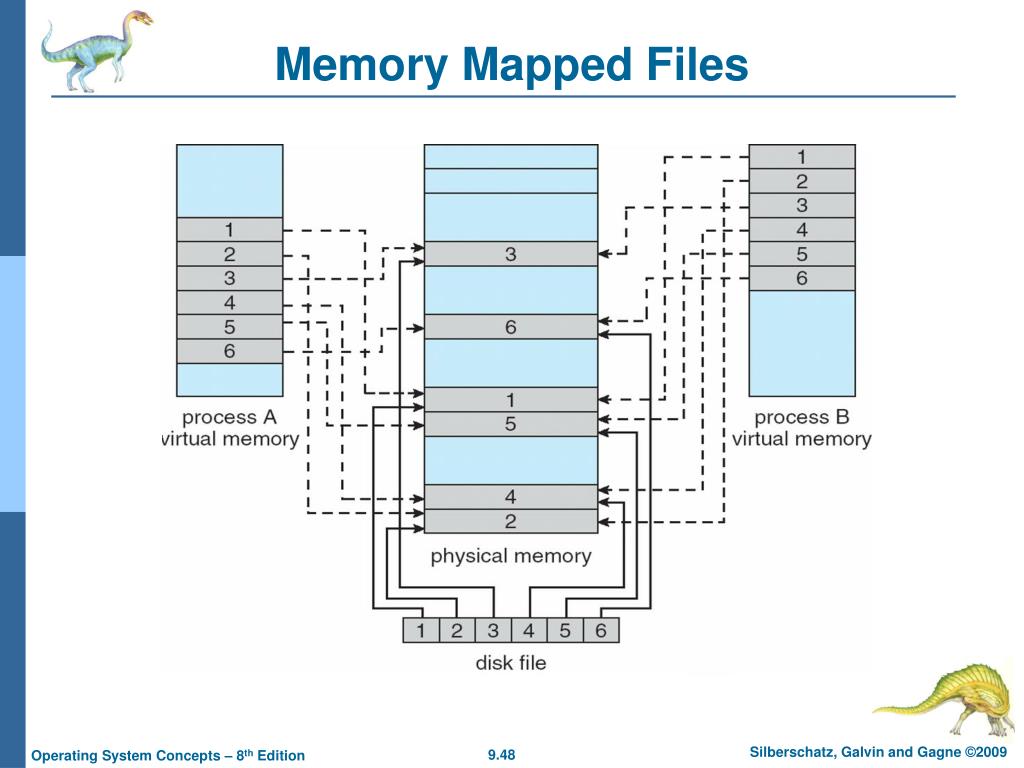

#Memory mapped file 64 Bit
Mmap(io::Union, linked to the file associated with stream s.Ī more portable file would need to encode the word size – 32 bit or 64 bit – and endianness information in the header.
#Memory mapped file code

_tprintf(TEXT("Could not map view of file (%d).\n"),ĬopyMemory((PVOID)pBuf, szMsg, (_tcslen(szMsg) * sizeof(TCHAR))) Ī second process can access the string written to the shared memory by the first process by calling the OpenFileMapping function specifying the same name for the mapping object as the first process. PBuf = (LPTSTR) MapViewOfFile(hMapFile, // handle to map objectįILE_MAP_ALL_ACCESS, // read/write permission If a child process is created, it inherits the. _tprintf(TEXT("Could not create file mapping object (%d).\n"), Memory Mapping When two processes map the same region of a file, they share the same pages of physical memory. TCHAR szMsg=TEXT("Message from first process.") Ġ, // maximum object size (high-order DWORD)īUF_SIZE, // maximum object size (low-order DWORD) TCHAR szName=TEXT("Global\\MyFileMappingObject")
#Memory mapped file free
When all handles are closed, the system can free the section of the paging file that the object uses.

When the process no longer needs access to the file mapping object, it should call the CloseHandle function. This requires that the first process must have the SeCreateGlobalPrivilege privilege. Prefixing the file mapping object names with "Global\" allows processes to communicate with each other even if they are in different terminal server sessions. When you create a shared memory block, you can pass the SECRESERVE flag to CreateFileMapping, then the size you pass to the function is treated as a maximum rather than an exact size. The process then uses the CopyMemory function to write a string to the view that can be accessed by other processes. A little-known feature of shared memory blocks in Win32 is that it is possible to resize them, sort of. The MapViewOfFile function returns a pointer to the file view, pBuf. Then the process uses the file mapping object handle that CreateFileMapping returns in a call to MapViewOfFile to create a view of the file in the process address space. By using the PAGE_READWRITE flag, the process has read/write permission to the memory through any file views that are created. The first process creates the file mapping object by calling the CreateFileMapping function with INVALID_HANDLE_VALUE and a name for the object. To share data, multiple processes can use memory-mapped files that the system paging file stores.


 0 kommentar(er)
0 kommentar(er)
